-
Posts
83 -
Joined
-
Last visited
-
Days Won
4
Content Type
Profiles
Forums
Gallery
Events
Articles
Blogs
Downloads
Posts posted by Brad Baugh
-
-
VANHALEN
As I have said I love the guitar and therefore I am eclectic about its playing. So in order to move away from Classical and Country Western here is an excellent interview provided by Eddie Van Halen. What I like about this interview section is that it is providing me an opportunity to hear directly from many entertainers … what you see on stage may not always be what you expect when you hear them talk. I do listen to a lot of interviews to try and select the best for you … enjoy. Oooops great interview. You may find it on the web.
-
The other day I had the chance to talk with Suze Spencer … great gal. She is the grand-daughter of Tim Spencer (One of the 3 original Sons of the pioneers and a fantastic song writer). Anyhow she mentioned she has some of the original wax recordings the boys made in the beginning.
So after some digging through my collections I found Len Slye (aka Roy Rogers) playing rhythm guitar for the fancy fiddling of Carl Farr. This was done sometime in the 1930s before Len changed his name to Roy and began making movies.
One of my favorite stories that Roy use to tell was when he wanted to sneak out of town and go hunting. He had let his beard grow out, dumped all his fancy wear and put on sun glasses and started heading through the Los Angles airport; figuring no one would recognize him. All of a sudden he hears this loud yell … “Len, Len Slye how the hell are you? What have you been up to ….” It was one of his buddies from Duck Run, Ohio where Roy .. I mean Len grew up. I can’t imagine no one not knowing who he was but … poor old guitar picking Len Slye couldn’t even make it out of town without someone recognizing him. So here is Len and Carl ….. sorry it is 5 MB
-
Don't forget to bring it home with you.
-
Hi, Thought some of you might find this interesting. This is an old Smiley Burnett Radio show. Smiley played multiple instruments and was the sidekick for Roy, Gene Autry, and the Durango Kid. Now the main reason I am sharing this is my interest in the old guitar players. The Whippoorwills back Smiley in this show ... just as they did Roy Rogers in his show. The Whippoorwills was a Jazz/Country band headed by Roy Lanham (who also played with the Sons of the Pioneers). Roy L's was one of the players who's name kept coming up in guitar history so I figured I would pull out one of the shows where you could hear him play. I think Gene Monbeck is the rhythm guitarist backing Roy. There are a few of Lanham records on You Tube.
-
1. You must instantly know ALL the note names on the
grand staff without hesitation.
2. You must know by heart ALL the major key signatures,
and be able to write any major scale. Practice the
major scales on your guitar until you can play ANY
major scale from memory and without thinking about it!
3. Once you've done #2, then you can go to work on the
minor scales/keys. Practice your minor scales on your
guitar.
-
 1
1
-
-
Hi, Here is an interview by Merle Travis. First of all I am kind of partial to Merle. I love his picking and the Floyd Baugh who Merle talks about working for hauling meat is a relative. Another relative Bunnie Baugh provided land for a monument presented to Merle during a celebration in his honor. Prior to his death Merle chose to be cremated and his ashes were scattered around the monument. Merle played guitar with Ike Everly, and Mose Rager on Bunnie’s front porch, which was across the street from the monument.
-
 1
1
-
-
January 2019 Book Review
THE GUITAR: From the Renaissance to the Present Day
Harvey Tumbull
Charles Scribner’s Sons
New York, 1978
SBN: 684-13215-x (cloth)
168 pgs.
Amazon
$28 - $45
HAPPY NEW YEAR TO ALL !!! I had a great Christmas and received a lot of new guitar books to read. Here is another guitar history book.
I liked this one. The approach is more specific than some of the other history books I have reviewed. It selects specific individuals and follows there history and how they related to the development of the guitar.
Mr. Tumbull relates the structure of the instrument to the development of the music that was created specific for the guitar.
Chapters found in the book consist of the following:
List of Music Examples
Preface
- The Development of the Instrument (I): The Vibuela and Early guitars
The Vihuela and the Viola da Mano
Four-course Guitar to Five-course Guitar
Fretting
Makers and Instruments
2. The Sixteenth Century: The Vibuela and Four-Course Guitar
The Vihuelistas, their Music and Technique
The Four-course Guitar in Italy and Spain
The Four-course Guitar in France
3. The Baroque: Era of the Five-Course Guitar
Juan Carlos Amat and the Spanish Guitar
The Spanish Guitar in Italy
The Spanish Guitar in France and England: Francesco Corbetta
The Spanish Guitar in the Netherlands and German
The Spanish Guitar in Spain
Eighteenth-Century Decline
4. The Development of the Instrument (II): The Six-string Guitar and the Appearance of the Modern Instrument
The Addition of the Sixth String and Constructional Improvements
Unusual Guitars
The Modern Instrument - Torres and after
5. Classical and Romantic: The Nineteenth Century
The Early Nineteenth Century Guitar in Europe
The Early Nineteenth Century Guitar in England
Tutors and Technique
Tarrega - Afresh Start
6. The Twentieth Century: A New Lease of Life
The Achievement of Andres Segovia
The Guitar in England
Present and Future
Notes and Reference
List of Plates
Bibliography
Index
As you can see the book addresses the development of the guitar from the beginning through the current concepts of classical design. The electrical guitar is only briefly mentioned.
Complaints that the guitar could not be heard in large early music halls resulted in no orchestra music being written for the guitar. Kind of sounds familiar … I need to electrify my jazz guitar so it can be heard in the band.
What, to me, makes this an interesting book was the cycles regarding which guitars were loved by the populous and which were not i.e. 12 string, 7 string, 4 string, 5 string, and finally the 6 string.
Turnbull says that “the compositions of Classical guitarists Sor and Giuliani set a standard not matched by the other guitar composers of their day …. “. The book offers multiple examples of various sonatas, etudes and extracts from various songs. There is a real plus for those who can read music, but the non readers will also gain benefits from observing various changes identified by the author.
The author continues by stating … “Any assessment of modern guitar music is made difficult by the fact that it is still in the process of evolution. The task is not lightened by the increasing output of music for the instrument from many parts of the world”.
I think you will find this little book to be interesting as it presents a different manner in observing the development of the guitar.
As I mentioned I received several guitar books for Christmas. These books cover Jazz Guitar and Blues Guitar history and performers, utilization of a looper with various songs, music theory and tonal harmony, the history of the guitar in America, and the value of older guitars; so hopefully in the coming year I will hit upon a book that may interest you.
In year 2020 I am looking at reviewing the stacks of guitar instructional books on my shelves. At this point I highly recommend starting with Learn and Master (L&M) … I will then add suggested supplemental programs and programs with various approaches to learning the guitar. This material will be of benefit if you already have a grounded approach found in L&M.
If you look through Guitar Gathering you will find a “new topic” that I started last month and entitled “Interviews”. Tommy Emmanuel is presently on the site and I am going to add a new interview … Merle Travis’s discussion about his early days.
I look at a lot of interviews and I figure I should be able to come up with at least one good interview each month. My approach will be eclectic like the book reviews so I hope you will join in and put up some of the interviews you run across that you think members of our group would like and should view.
Take care,
Brad
-
Hey Blue Dog many thanks for copying the interview ... sorry my link didn't work. Thats what I like about this group ... we help out each other. Have a great Christmas.
Brad
-
The other day I had the privilege of meeting Tommy Emmanuel and like all of you I surf (old term but I'm old guy) the web ... especially YOU TUBE ... I found this interview. This interview I believe answers many a question and like the individual who originally posted it ... the BEST Interview. Enjoy ... Tommy Emmanuel - The Best Interview (wywiad dla INFOMUSIC).mp4
-
 1
1
-
-
DECEMBER REVIEW
GUITAR ENGINEERING: Theory and Practice
Richard Mark French
Springer Science Pub
New York
2009
ISBN: 978-0-387-74368-4
266 pgs.
Amazon
$13 - $ 45
Sure hope you like math because this is an engineering text. Richard does stay away from calculus but the finite math and differential equations can get a little hairy. However, if you want to know about the guitar inside and out this is the only book you will ever need. Richard teaches Mechanical Engineering at Purdue University and one of the courses consists of the students being required to build a guitar from scratch
The following is a list of the contents of the book. As you read through the topics you will see this is no easy course.
Contents
Chapter 1 … HISTORY OF THE GUITAR
Development of the Classical Guitar
The Modern Guitar
Chapter 2 … ACOUSTICS AND MUSICAL THEORY
Basics of Music
Scales and Temperament
Quantifying Sound
Sound Radiation
Human Perceptions of Sound
Graphical Representations of Sound
Chapter 3 … STRUCTURE OF THE GUITAR
Basic Components
Classical Guitar
Steel String Acoustic Guitar
Solid Body Electric Guitar
Archtop Jazz Guitar
Hybrid Instruments
Static and Dynamic Loads
Material
Chapter 4 … DYNAMIC BEHAVIOR
Structural Dynamics
Strings
Analyzing String Dynamics
Experimental Results from Vibrating String
Real Strings and Intonation
Acoustic Guitar Bodies
Complete Instrument
Chapter 5 … MODELS
Discret Models
Two Degree of Freedom (DOF) Model
Two DOF Example
Three DOF Model
Three DOF Example
Calculating the Effects of Design Changes
Finite Difference Models
Finite Difference Acoustic Models
Finite Element Models
Boundary Element Models
Geometry Models
Chapter 6 … MANUFACTURING PROCESSES
Small Batch Instruments
Mass Produced Instruments
Build Variation
Materials and Construction
Response Variation Testing
Test Method Verification
Building in Good Tone
Chapter 7 … SOUND QUALITY
Elements of Sound Quality
Time Domain Descriptions
Frequency Domain Descriptions
Psychoacoustic Descriptions
Subjective Rankings
Structural Characteristics
Acoustic Characteristics
Predicting Sound Quality
Chapter 8 … GUTIAR ELECTRONICS
Inductive Pickups
Piezoelectric Pickups
Seismic Pickups
Pre-Amplifiers
Grounding and Isolation
Chapter 9 … UNIQUE CHARACTERISTICS
Classical Guitars
Steel String
Solid Body Electric Guitars
Semi-Hollow Body Electric Guitars
Jazz Guitars
References
Index
O.K., O.K., I can hear the screams but seriously it is a great book and I really learned a lot from it. Yes, the math is a real bugger, but if you have had high school algebra and you are not out to conquer each math formula you will do fine The math shown explains the way various structural and sound evaluations are completed. The author talks about the very very very small difference between an inexpensive guitar and one you would sell your house to purchase. If you are drooling over a $10,000 guitar (short of it being owned by your ideal) you will no longer feel frustrated.
He compares the nylon classical, steel string acoustic, and solid body electric guitars. Talking about their construction. The differences in mathematical values between Fender, Gibson, and other guitar manufactures. Taylor guitar company provided a lot of pictures for the book, which I greatly appreciated and even found their web page because of the generosity they made in making the book.
Richard talks about the small one person guitar builder and how they manufacture guitars verses the large companies that use computers and laser cutters to provide similar guitars with similar sounds. Wait … each guitar even though they meet similar mathematical standards is still unique … just as a child from the same family.
I underlined a slew of one liner comments that made the book well worth the cost and I am happy to have it on my shelf. It would make a great Christmas present for the person who has everything guitar.
Well gang, I want to take a minute to wish all of you a very Merry Christmas and a successful New Year!!! I started reading guitar books more than a year ago and it has been an interesting trip. I have really learned a lot this past year and I hope I was able to share my knowledge in a meaningful way with all of you.
A special thanks to Steve and all those who share their time to provide this web outlet.
Take Care …. Brad
-
I'll never forget the first time I saw Roy. Johnny Cash and the Statler Bros. came to town and this unknown picker opened the show. I couldn't stop talking about him. He was a great talent and nice guy. He will be missed. At least 2 days a week I start my morning off listening to Roy.
-
 1
1
-
-
THE NEW ELECTRONIC GUITARIST
Marty Cutler
Hal Leonard Books
New Jersey
2017
ISBN: 978-1-4950-4745-9
211 pages + on-line media
Amazon
$9 - $20
What the heck did I get into?? Now I guess MIDI (Musical Instrument Digital Interface) guitars and synthesizers have been around for over 30 years, but since I am an old conservative guitar player I never paid much attention to them. And I am sure to many of you it is your thing. Anyhow, I want to know all I can about the guitar so that means stretching to the future as well as going back in the past.
This is a very interesting book about sound, the guitar and everything you can do when you place a computer in between the two. Elliott Randall (Guitarist for Saturday Night Live) made the following comments about the book …”This a wonderful grab bag of musical knowledge.” He adds, “It is desired to demystify and share exciting areas where many guitarists have yet to tread … I would call this a must-read.” I must agree with Randall I have yet to run across another guitar book such as this one.
As usual let me present the massive contents of the book and then I will make my comments.
Foreword
Acknowledgements
Introduction: Guitar Meets Computer
Chapter I … GUITARS, SOUND, AND SYNTHESIS
What Is Sound?
Pitch, Timbre, and Loudness
Timbre!
A Disturbance in the Force
The Body Electric
Start Here
Chapter 2 … WHAT’S A MIDI
Before MIDI
Along Came MIDI
How MIDI Works
MIDI Signal Flow
Control Changes
The Bends
You’re in My System
Guitars and MIDI
MIDI aLa Mode
Poly or Mono?
Chapter 3 GUITAR MEETS MIDI
Converting to MIDI
Why Wait?
First out of the Gate
Careful with That Axe
Axon
Chapter 4 WHAT IS A SYNTHESIZER?
Subtractive Synthesis
Subtractive Synthesis in a Nutshell
Your Basic Waveform
Filters
Amplifiers
The Envelope, Please
Key Follow and Velocity
Everything in Modulation
Additive Synthesis
Digital FM Synthesis
Samplers, Sample Playback, Wavetables
Modeling
Chapter 5 Guitar Controllers and Midi Converters
Around the Bend
Not for Synthesizers only
Reading a Midi Implementation Chart
Currently Available MIDI Guitar Systems and Components
How Do Computers Fit In?
Guitar-Processing Software
Editor-Librarian Software
Take Note
Chapter 6 THIS YEARS MODEL
Why Physical Modeling?
Roland GR-55
Boss GP-10
Boss SY-300
Line 6 Variax
Soft Sell
Chapter 7 GUITAR PROCESSORS
A Child’s Garden of Effects
Multi-Effects
Fractal Audio Axe Fx II XL
Line 6 Helix
Signal Flow
Native Instruments’ Guitar Rig
Now, About Those Presets
IK Multimedia Amplitube Acoustic
Chapter 8 WHAT IS A SEQUENCER?
Proto-Sequencers
How Do Sequencers Work?
Ableton Live (Mac, Win)
MOTU Digital Performer (Mac, Win)
Apple Logic Pro X (Mac)
Steinberg Cubase Pro (Mac, Win)
Presonus Studio One Pro 3 (Mac, Win)
Propellerhead Reason (Mac, Win)
Avid Pro Tools (Mac, Win)
Take Your Pick
Chapter 9 PLUG-INS AND SOFTWARE INSTRUMENTS
Spectrasonics Omnisphere 2
Arturia Matrix-12 V
Guitar Multitudes
Native Instruments’ Kontakt
Art and Architecture
Native Instruments’ FM8
Lin Plug Spectral
Korg Legacy M1
Chapter 10 GUITAR VERSUS SYNTH: WHO’S IN CHARGE HERE?
Envelopes Rule
Chapter 11 COMPOSING WITH A MIDI GUITAR
Virtually Bluegrass?
Singular Saxophony
Chords: Guitar versus Keyboard
Making the Pitch
Chapter 12 OTHER MIDI GUITAR APPLICATION
Practice, Practice
Take Note
The Global Studio
Virtual Virtuosos
Chapter 13 OUTFITTING YOUR COMPUTER FOR GUITAR
Interfaces
Chapter 14 GOING LIVE
A Brief Pep Talk of Sorts
Amplitude Adjustment
Chapter 15 TIPS AND TRICKS
Express Yourself
Small Consolation
Set Phasers to Stun
Setting up a Multitimbral Track in DP
Chapter 16 TROUBLESHOOTING
It’s a Hardware Issue
It’s a Software Issue
Latency
Appendix A: CONTROL CHANGE MESSAGES (DATA BYTES)
Appendix B: USEFUL WEBSITES FOR THE ELECTRONIC GUITARIST
Appendix ? Bonus Audio Files
Glossary
Whew, that is a long list but the book is comprehensive!!! This book was not what I expected when I bought it, but I am glad I read it. It is probably not the way I will go with my guitar, but I am glad to have the knowledge.
This book was published in 2017 and it dated the start of MIDI as being over 30 years old and I really felt behind in the times, but Marty Cutler did and excellent job of spanning those years and placing the reader at the front of a new door to open. This is not unlike the movement of the old 5 and 7 string guitars giving way to the 6 string format.
Cutler states …”my smartphone and iPad are brimming with guitar-processor software and even an app that converts a normal guitar to a MIDI controller to play those synthesizers.” He continues … “Computers, tablets, iPads and smartphones have taken the stage, enhancing and even replacing stomp boxes and entire guitar rigs.” “For those who are willing to dig a little deeper, the digital-guitar connection opens doors to a truly mind-boggling wealth of new tone colors, rhythms, compositional and learning tools, collaboration, and so much more, It’s the intentions of this book to lay out the scope of current and emerging digital technology, which can enhance the guitarist’s creativity in so many ways.” I believe Marty has done just that … this is a must read for anyone who wants to be challenged by the future of a fantastic instrument. You will, all the more, appreciate the complexity and the power of the guitar once you complete this book. If you are new to the guitar and the use of a computer don’t worry this book is designed to walk you through the uniting process. Great read!!
I did check at the college where I am doing my music studies about taking some courses in MIDI, but I was told even though they have a formal course in music technology that since I was interested solely in the guitar I would be better off going to my local guitar store and have them show me what is currently being sold and to try out several different pieces of software. And then if I had any general questions they could help me with … come back. I am sure there are quite a few people in “Guitar Gathers” who can also answer any questions you may have … that is the neat thing about this group that Steve has assembled.
Don’t put away your techie minds … next month I will look at Guitar Engineering: Theory and Practice by Ricard Mark French.
Well once again I set this aside to go study and practice. I have my formal courses in music theory and guitar and more course work found in the multiple programs Steve has produced to keep me busy. I always learn so much as a student … the only way you learn more is by being a teacher. Have a great month and go read a book in between practicing. Happy Thanksgiving!!!
-
THE NEW ELECTRONIC GUITARIST
Marty Cutler
Hal Leonard Books, New Jersey, 2017
ISBN: 978-1-4950-4745-9
211 pages + on-line media
Amazon
$9 - $20
What the heck did I get into?? Now I guess MIDI (Musical Instrument Digital Interface) guitars and synthesizers have been around for over 30 years, but since I am an old conservative guitar player I never paid much attention to them. And I am sure to many of you it is your thing. Anyhow, I want to know all I can about the guitar so that means stretching to the future as well as going back in the past.
This is a very interesting book about sound, the guitar and everything you can do when you place a computer in between the two. Elliott Randall (Guitarist for Saturday Night Live) made the following comments about the book …”This a wonderful grab bag of musical knowledge.” He adds, “It is desired to demystify and share exciting areas where many guitarists have yet to tread … I would call this a must-read.” I must agree with Randall I have yet to run across another guitar book such as this one.
As usual let me present the massive contents of the book and then I will make my comments.
Foreword
Acknowledgements
Introduction: Guitar Meets Computer
Chapter I … GUITARS, SOUND, AND SYNTHESIS
What Is Sound?
Pitch, Timbre, and Loudness
Timbre!
A Disturbance in the Force
The Body Electric
Start Here
Chapter 2 … WHAT’S A MIDI
Before MIDI
Along Came MIDI
How MIDI Works
MIDI Signal Flow
Control Changes
The Bends
You’re in My System
Guitars and MIDI
MIDI aLa Mode
Poly or Mono?
Chapter 3 GUITAR MEETS MIDI
Converting to MIDI
Why Wait?
First out of the Gate
Careful with That Axe
Axon
Chapter 4 WHAT IS A SYNTHESIZER?
Subtractive Synthesis
Subtractive Synthesis in a Nutshell
Your Basic Waveform
Filters
Amplifiers
The Envelope, Please
Key Follow and Velocity
Everything in Modulation
Additive Synthesis
Digital FM Synthesis
Samplers, Sample Playback, Wavetables
Modeling
Chapter 5 Guitar Controllers and Midi Converters
Around the Bend
Not for Synthesizers only
Reading a Midi Implementation Chart
Currently Available MIDI Guitar Systems and Components
How Do Computers Fit In?
Guitar-Processing Software
Editor-Librarian Software
Take Note
Chapter 6 THIS YEARS MODEL
Why Physical Modeling?
Roland GR-55
Boss GP-10
Boss SY-300
Line 6 Variax
Soft Sell
Chapter 7 GUITAR PROCESSORS
A Child’s Garden of Effects
Multi-Effects
Fractal Audio Axe Fx II XL
Line 6 Helix
Signal Flow
Native Instruments’ Guitar Rig
Now, About Those Presets
IK Multimedia Amplitube Acoustic
Chapter 8 WHAT IS A SEQUENCER?
Proto-Sequencers
How Do Sequencers Work?
Ableton Live (Mac, Win)
MOTU Digital Performer (Mac, Win)
Apple Logic Pro X (Mac)
Steinberg Cubase Pro (Mac, Win)
Presonus Studio One Pro 3 (Mac, Win)
Propellerhead Reason (Mac, Win)
Avid Pro Tools (Mac, Win)
Take Your Pick
Chapter 9 PLUG-INS AND SOFTWARE INSTRUMENTS
Spectrasonics Omnisphere 2
Arturia Matrix-12 V
Guitar Multitudes
Native Instruments’ Kontakt
Art and Architecture
Native Instruments’ FM8
Lin Plug Spectral
Korg Legacy M1
Chapter 10 GUITAR VERSUS SYNTH: WHO’S IN CHARGE HERE?
Envelopes Rule
Chapter 11 COMPOSING WITH A MIDI GUITAR
Virtually Bluegrass?
Singular Saxophony
Chords: Guitar versus Keyboard
Making the Pitch
Chapter 12 OTHER MIDI GUITAR APPLICATION
Practice, Practice
Take Note
The Global Studio
Virtual Virtuosos
Chapter 13 OUTFITTING YOUR COMPUTER FOR GUITAR
Interfaces
Chapter 14 GOING LIVE
A Brief Pep Talk of Sorts
Amplitude Adjustment
Chapter 15 TIPS AND TRICKS
Express Yourself
Small Consolation
Set Phasers to Stun
Setting up a Multitimbral Track in DP
Chapter 16 TROUBLESHOOTING
It’s a Hardware Issue
It’s a Software Issue
Latency
Appendix A: CONTROL CHANGE MESSAGES (DATA BYTES)
Appendix B: USEFUL WEBSITES FOR THE ELECTRONIC GUITARIST
Appendix ? Bonus Audio Files
Glossary
Whew, that is a long list but the book is comprehensive!!! This book was not what I expected when I bought it, but I am glad I read it. It is probably not the way I will go with my guitar, but I am glad to have the knowledge.
This book was published in 2017 and it dated the start of MIDI as being over 30 years old and I really felt behind in the times, but Marty Cutler did and excellent job of spanning those years and placing the reader at the front of a new door to open. This is not unlike the movement of the old 5 and 7 string guitars giving way to the 6 string format.
Cutler states …”my smartphone and iPad are brimming with guitar-processor software and even an app that converts a normal guitar to a MIDI controller to play those synthesizers.” He continues … “Computers, tablets, iPads and smartphones have taken the stage, enhancing and even replacing stomp boxes and entire guitar rigs.” “For those who are willing to dig a little deeper, the digital-guitar connection opens doors to a truly mind-boggling wealth of new tone colors, rhythms, compositional and learning tools, collaboration, and so much more, It’s the intentions of this book to lay out the scope of current and emerging digital technology, which can enhance the guitarist’s creativity in so many ways.” I believe Marty has done just that … this is a must read for anyone who wants to be challenged by the future of a fantastic instrument. You will, all the more, appreciate the complexity and the power of the guitar once you complete this book. If you are new to the guitar and the use of a computer don’t worry this book is designed to walk you through the uniting process. Great read!!
I did check at the college where I am doing my music studies about taking some courses in MIDI, but I was told even though they have a formal course in music technology that since I was interested solely in the guitar I would be better off going to my local guitar store and have them show me what is currently being sold and to try out several different pieces of software. And then if I had any general questions they could help me with … come back. I am sure there are quite a few people in “Guitar Gathers” who can also answer any questions you may have … that is the neat thing about this group that Steve has assembled.
Don’t put away your techie minds … next month I will look at Guitar Engineering: Theory and Practice by Ricard Mark French.
Well once again I set this aside to go study and practice. I have my formal courses in music theory and guitar and more course work found in the multiple programs Steve has produced to keep me busy. I always learn so much as a student … the only way you learn more is by being a teacher. Have a great month and go read a book in between practicing. Happy Thanksgiving!!!
Oh I have attached couple interesting downloads demonstrating the guitar and synthesizer.
-
HI,
Here is my 2019 guitar calendar. One trip to Walmart and a little time. I bought 3 of the sticky hangers that go on your wall (I put mine on a cork board). I then got a package of plastic sheet protectors … which I filled with my favorite pictures. Back home I went on the web and found several different 2019 calendar templates and downloaded a couple that I liked. Next I got some small picture frame wire that I could hang from the sticky hooks … long enough so I could see the calendar at the bottom of the picture. The thing that is neat is I can use all my favorite pictures and change them as I desire … rather than waiting for the end of the month. Plus I have more than the 12 pictures which is limited by a standard calendar. I can also get at the calendar very easily to mark dates and leave notes. -
I have a couple of DVDs that give the basics ...
Rick Vito ... Complete Guide to Slide Guitar Published by Hal-Leonard
and
Roy Rogers ... Slide Guitar For Rock & Blues Published by Homespun
They are not that bad and might give you and idea of what might be available to you.
-
Ya team we are pulling for you!!!
-
 1
1
-
-
Hi Dave,
My guitar instructor requires a weekly report with times, what practice, our feels about the practice, etc. I try to block my time so all my guitar time is together, but that may change depending on other family requirements. I looked at the app you put up and think it might be useful if you were trying to budget your time or discipline yourself to studying. Not sure if this helps. Have a great E2 day.
-
Great book ... I have a copy of it!!!
-
ALFRED’S TEACH YOURSELF GUITAR TONE AND EFFECTS
Tobias Hurwitz
Ethan Fiks
Vivian ClementAlfred Music Publishing
Van Nuys, CA2012
ISBN: 13:978-0-7390-9076-3
96 pages + CD
Amazon
$28
I have always like the “Alfred’s Teach Yourself …” book series. Most of them are pretty direct and easy to follow. This book is no exception. The CDs they supply provides that extra information to help solidify the knowledge you gain from the book.
We have looked at the history of the electric guitar and the amplifiers used to express the players music. This book will take you a step further as it looks at the various tones and effect that can be produced by the use of multiple types of accessories you can attach to your guitar. Once again I will start with the list of the books contents. The reason I do this is it allows the reader to quickly see if a specific subject they are interested in is cover in the book.
Content
ABOUT THE AUTHORS
INTRODUCTIONChapter i … THE BASICS
The Electric Guitar
The Science of Sound
About Block Diagrams
About the Order of Effects
Tone: The Big PictureChapter 2 … WHERE IT ALL STARTS: THE GUITAR
Stratocasters and Strat-style Guitars
The Gibson Les Paul
Archtops
More Guitars
Pickups
Amplification
The Combo Amp
The Stack
The Rack System
Modeling Amps
Boutique AmpsChapter 3 … SPEAKERS AND CABINETS
Cabinets
Cones
open Back or Closed Back?Chapter 4 … PEDALS, PROCESSORS, AND WHAT THEY DO
Fuzz
Distortion
Overdrive
Reverb
Delay/Echo
Flanger
Chorus
Wah
Auto-Wah/Envelope Follower
Phase Shifter
Noise Gates
Hush-2
Compressors and Limiters
Equalizers
Ring Modulator
Talk Box
Octaver/Harmonizer
Tremolo/Vibrato
Artificial Loads
E-Bow
Exciter/Enhancer
Guitar Synthesizer
Multi-Effects
Licks used in This ChapterChapter 5 … THE SOUNDS OF LEGENDARY PLAYERS
The Carlos Santana Sound
The Kurt Cobain Sound
The Joe Satriani Sound
The Jimi Hendrix Sound
The Eddie Van Halen Sound
The Stevie Ray Vaughn Sound
The Randy Rhoads Sound
The Metallica Sound
The Boston Sound
The Michael Angelo Batio Sound
The Tom Morello Sound
The John Frusciante SoundChapter 6 … MORE ON EFFECTS
Distortion
Chorus
Flanger
Delay
Reverb
Compressor
Ring Modulator
Pitch Shifter
Wrap UpChapter 7 … EVERYDAY SOUNDS
Creaky Door
Big Bell
Jet Take-off
Coyote Falls Off Cliff
SpeedsterChapter 8 … SYNTHETIC SOUNDS
Feedback
Growls
SquealsChapter 9 … THE ANIMAL KINGDOM
Talking Cat
Whale
Elephant’s Roar
SeagullsChapter 10 … OTHER INSTRUMENTS
Cellos (Or other Strings)
String Thing in A
A Simple Oscillator
Bonus Effect: Siren
Electronic Kick/Snare
Organ
(Slap) Bass
Basic Fake Bass
Chimes
DJ Record Scratch
Synthesizer Pad
Steel Drums (Pans)
Panned Out
Sitar
Bagpipes
Amazing GraceChapter 11 … Artists to Check Out
Spotlight on Vinnie Bell
Spotlight on Adrian Belew
Other Artists Not to MissChapter 12 … CREATING YOUR OWN HOME STUDIO
Setting up Your Studio
Direct RecordingChapter 13 … RECORDING YOUR INSTRUMENTS
Microphones 101
Mic Techniques
How to Mic Amps for Electric GuitarsConclusion
Once again this is a long list of items, but some are very short topics … for instance the list of animal sounds, other instruments etc. … the book describes how to make those specific sounds using your guitar.
The authors do exactly what they say … they teach you about tones and effects. As they stipulate the book suggests a lot of specific guitars and pieces of gear to obtain certain sounds. They go through different boxes and explain what each does … you sure can spend a lot of money on boxes you may not need. Read about and listen to the accessory you want before you start spending money. Also the sound you hear from a box may not be the same you will get … if your review was done on a Strat and you own a Les Paul the sound could be totally different. The authors provide songs you can look up on “You Tube” and you will be able to hear how the effect was used by one of your favorite players. The book also presents a discussion on how the effect may sound using a specific “Lick” … what is neat is they also teach you the “Lick” so you can go to your favorite guitar store and test out the unit using their same “Lick”.
The book in addition provides a list of guitar players and discusses their tone and effects. As I have done in the past I went on “You Tube“ and tried to find 2 presentations from each player (One live and one studio recorded) to listen to to form my own opinion. Not all were favorites … in fact a couple had my toe nails curling and digging into the hardwood floor, but I could live with a couple others who’s performances I had never listen to all the way through.
This book is complemented vary nicely with Steve’s video “How to Build an Electric Guitar Pedalboard”. I would recommend them as a nice packaged Christmas present.
This little book has a lot of information in it. A perfect step from guitar to amplifier.
Wait until next months book review … you will be glad you got this and read it.Have a great month!!!
My wife and I are both back in school studying Music Theory. I am also taking a course in Classical Guitar, while she is refreshing her memory on the piano. We are having a great time and it wouldn’t have been without the encouragement provided by Steve and all the experiences the rest of you provide to “guitar gathering” … thanks to all of you.
Oh, here is an extra for those that would like to dig further into the operation of things ….
Electric-Guitar-Amp-Handbook by Jack Darr
and How Amps Work by Rob Robinette
Both of these pdf’s provide excellent information on how our amplifiers work and both of them can be found “free” on the web … without having to do too much digging. I printed both of them off and have them in plastic covers on my bookshelf.
TAKE CARE
-
HI,
Here is my 2019 guitar calendar. One trip to Walmart and a little time. I bought 3 of the sticky hangers that go on your wall (I put mine on a cork board). I then got a package of plastic sheet protectors … which I filled with my favorite pictures. Back home I went on the web and found several different 2019 calendar templates and downloaded a couple that I liked. Next I got some small picture frame wire that I could hang from the sticky hooks … long enough so I could see the calendar at the bottom of the picture. The thing that is neat is I can use all my favorite pictures and change them as I desire … rather than waiting for the end of the month. Plus I have more than the 12 pictures which is limited by a standard calendar. I can also get at the calendar very easily to mark dates and leave notes.-
 1
1
-
-
I took Steve and Bill's suggestion from last week. I do 45 minutes of practice and then walk on my treadmill for 10 minutes. It has been working great. I clock over 2 miles a day and I have no idea how much guitar time. I may study, work on a song, or practice.
Prior to changing I was doing 2 hour blocks and then taking an hour to walk or do the Canadian 5BX plan exercises. I'm still doing everything but just in shorter time spurts. I think it really works better. Can't wait to see how it will work once I am back in school.
-
 1
1
-
-
One step up from the cigar box model.
Surprisingly our community college is offering a course in guitar cigar box music. 3 string guitars are supplied plus they provide instructions on how to build your own guitar.
-
-
BONUS
The other day my wife, Karyl, and I had the great opportunity to meet and have breakfast with Steve Krenz. It was such a pleasurable morning I tried to think of someway I could share it with others. So I dug into my stuff and I think I have found something ….
In my early days I boxed, did judo and karate. I learned the concepts and philosophy of working in a dojo. The following book will give you that opportunity while learning the guitar. I hope you will enjoy which ever media you chose to use to expand your knowledge. This book is great for the beginner as well as the professional.
Zen Guitar
Philip Tosio Sudo
Simon & Schuster
New York, NY
1997Amazon
$9.00Thanks Steve for an enjoyable morning.


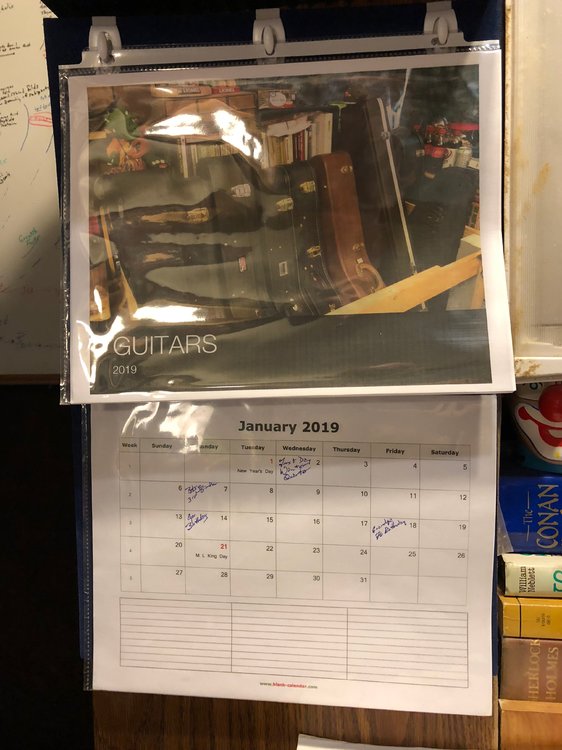
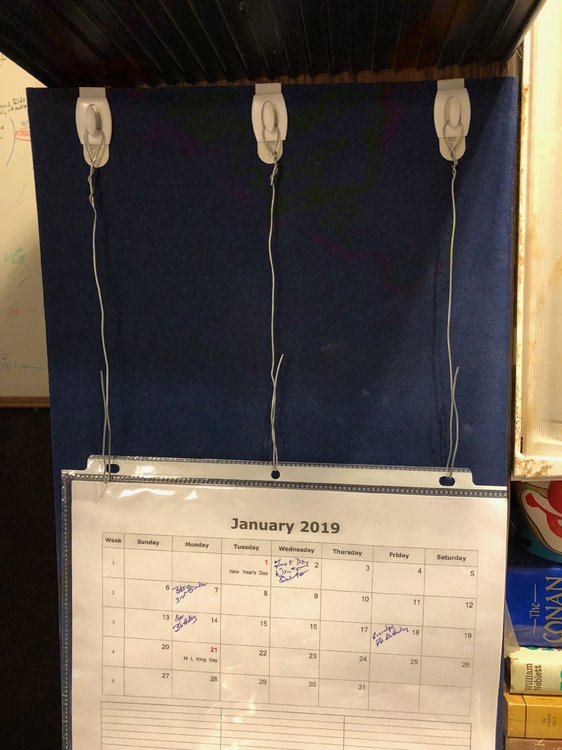
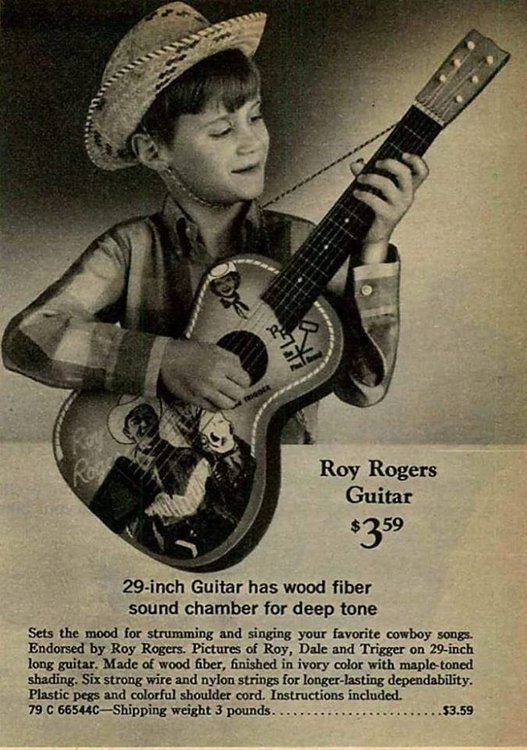
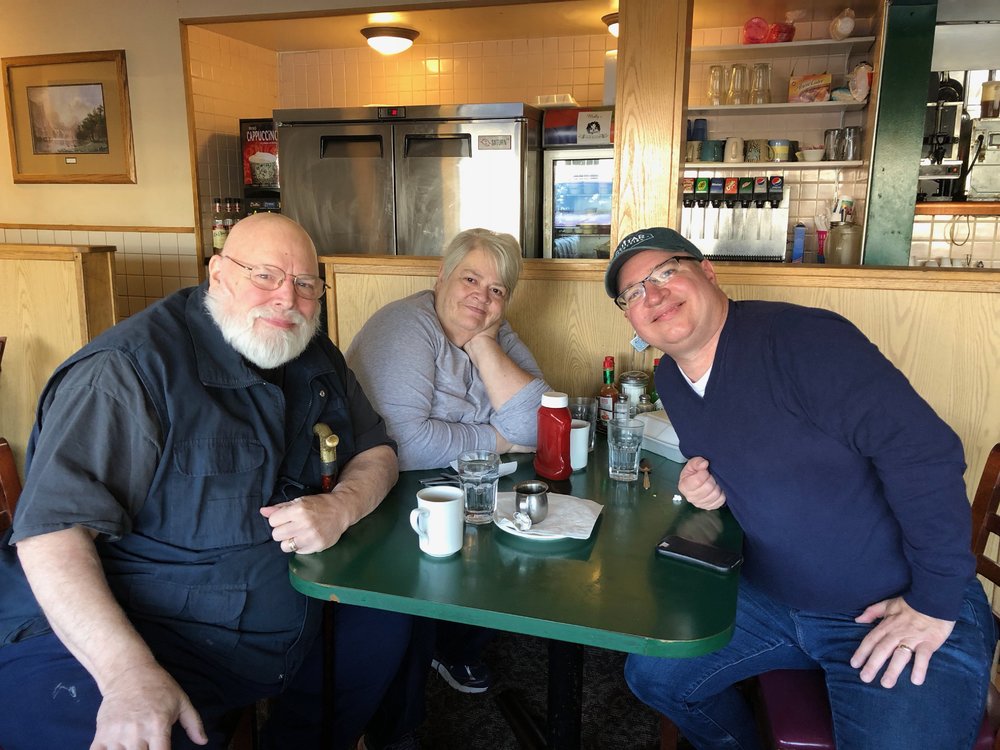
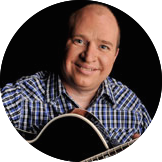
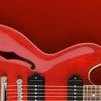
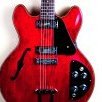

A Selection Of Guitar Books
in Guitar Open Talk
Posted
Hi Gang,
Well, I have a “2 for “ you this month. Two great little books (About 250 pages each). These are books you can lay at your bedside and try to read a single story at night (Hard to keep from reading all the way through when you get your hands on them.)
These books are guitar stories … missing guitars and finding unknowns. They make you want to get out of your chair and start crawling in old attics and dump sites. Deke Dickerson did an excellent job in putting these collections of stories together. He is involved in some of the ventures and especially in the second book readers of the first book sent him their tales.
Let me say the price truly varies and they can be hard to find. I have a hard copy of the first book and I only wish all my other books were printed and bound as well as this production is done. The second book I found on Barnes and Nobles Nook Book page and downloaded it.
Now I love books, but I try not to spend the egg money on them so do look around. Both of these books are super but at a reasonable price.
Rather than listing the chapters etc. I am doing something different this month. Attached you will find Deke Dickerson (the author) telling one of the type of stories that you can find in his books.
Great story about a lost the lost guitar of Speedy West ... you might find it if you dig around on the web ... maybe not.
Book Review
Strat in the Attic $25.00 - $12.00 AMAZON (IF YOU CAN GET IT) $15.00 BARNES AND NOBLE NOOK BOOK
Strat in the Attic 2 $200.00+ USED AMAZON (IF YOU CAN GET IT)
$15.00 BARNES AND NOBLE NOOK BOOK
Author: DEKE DICKERSON
2013/2014
“These books are not all about Strats, but all guitars!!” If you love guitars this is a must read!!!